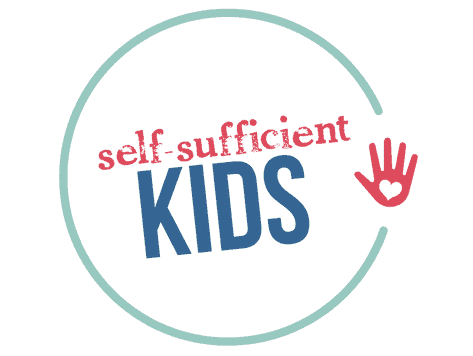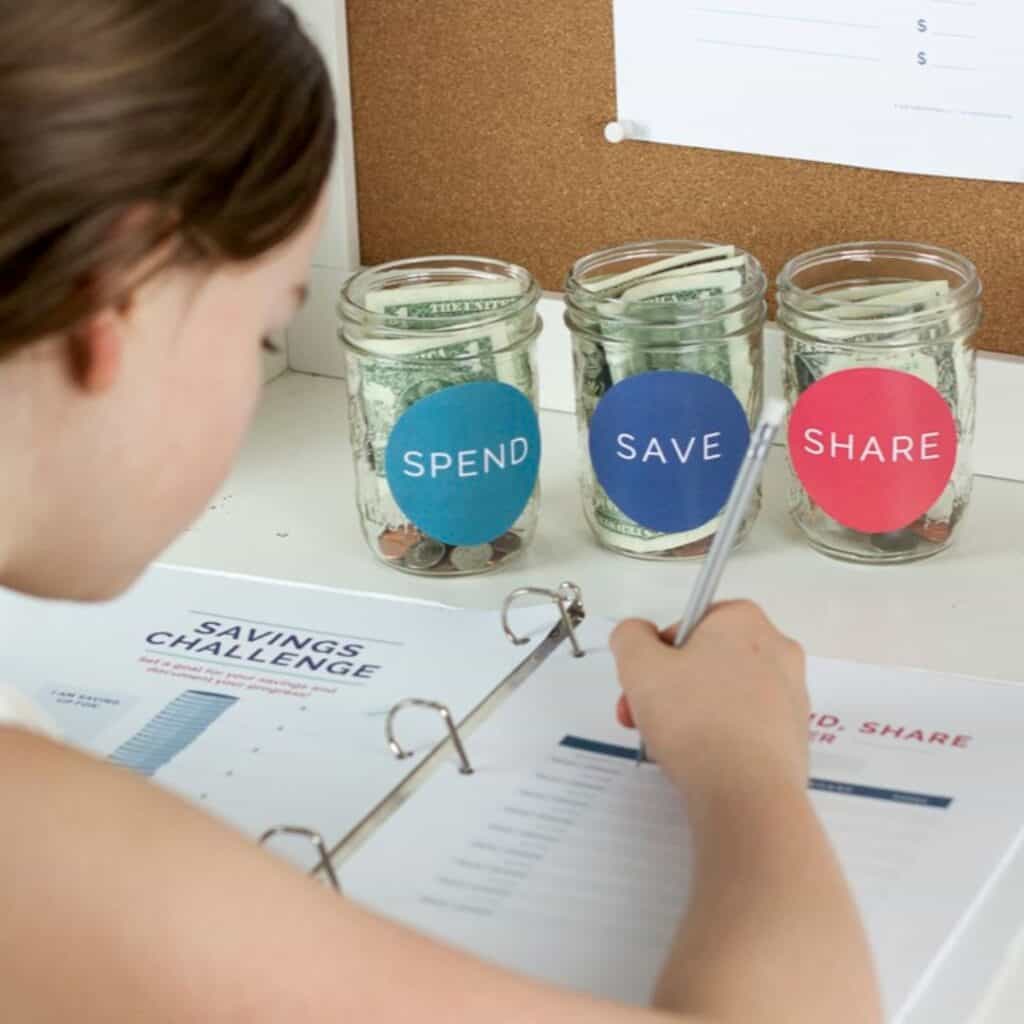12 of the Best Money Games for Kids
These money games for kids teach valuable lessons while still being fun.
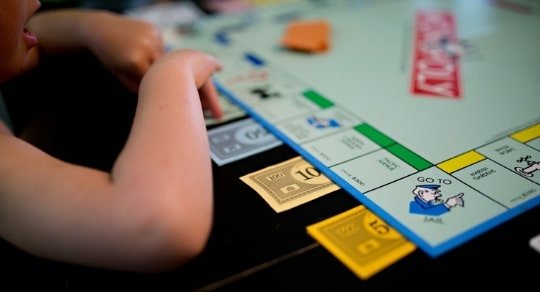
(This post contains affiliate links. If you click on a link and purchase the item, I will receive a commission at no extra cost to you.)
When was the last time your kids saw you pay for something in cash?
Maybe it was at a local restaurant that doesn’t accept credit cards, or when you took out a few quarters to buy pretzels from a vending machine.
But chances are your kids rarely see bills and coins exchange hands. What they’re more likely to observe is a plastic rectangle being swiped on the side of a small digital box that somehow magically lets you leave the store with whatever you came to buy.
Living in a digital world, it’s difficult for kids to deduce what really happens when adults pay for things. For all they know, the plastic rectangle you pass through a credit card reader is only slightly different than the Go Fish cards used during your last family game night.
The Best Money Games for Kids
Sure we could start paying for everything in cash – just so our kids understand how physical money works. But let’s be honest – credit and debit cards are easy.
Besides, kids tend to learn better by doing things themselves. So playing money games that teach kids the different values of bills and coins, how to handle money, and even economics and entrepreneurship is a great way to introduce these concepts.
The following is a list of money games for kids that can help your children better understand American bills and coins. Besides using the real thing, these money games are the next best thing.
The Best Counting Money Games: Card and Board Games
The counting money games listed below are arranged according to kids’ understanding of counting coins and bills. The first few games are best for beginners while subsequent games help kids practice their knowledge.
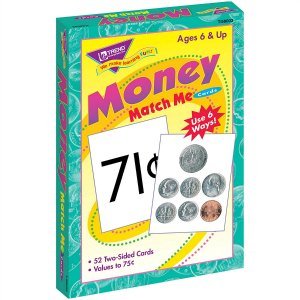
Money Match Me
Skills Focus: Learning to identify and count money, specifically coins
Age range: 6 to 8
While not entirely a game, Money Match Me can be a fun way for kids to test their knowledge of American coins. One card shows a group of coins that need to be matched with both a numeric and written description. For example, a picture of three quarters would be matched with a card that says both 75¢ and “Seventy-five cents”. These cards can be a great way to introduce coins to children. Further skills of adding and subtracting and making exact change can be acquired with some of the other games listed below.
** As an Amazon Associate I earn from qualifying purchases. **
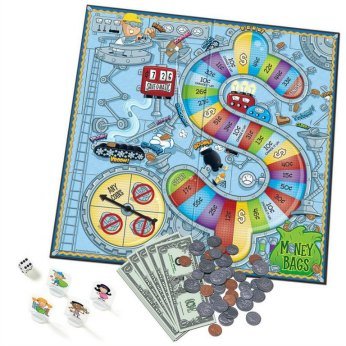
Money Bags Game
Skills Focus: Distinguishing different bills and coins and counting money
Age range: Recommended for ages 7+
If your kids need practice counting money and distinguishing between different coins and exchanging coins, the Money Bags game can help. As players move along the board they collect money from the bank but are constrained to specific coins. The game ends when the first player has moved through the spaces and reaches the last “End” space. The winner is the person who has the most money. While dollar bills are used in this game, the primary focus is on coins.
** As an Amazon Associate I earn from qualifying purchases. **
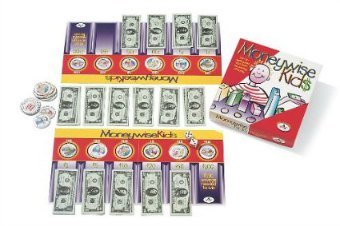
Moneywise Kids
Skill focus: Adding and subtracting U.S. bills
Age range: ages 7-12
If your child has basic money and math skills but could use a bit more practice handling bills, Moneywise Kids could be a great game to play. The objective of Moneywise Kids (which is actually two games in one), is to let children experience what it’s like to handle money, make change, and practice spending and saving money. In the first game, players race to see who can reach $100 in savings first. A bit of complexity is added to the second game since in addition to collecting $100, players also have to collect six Moneywise Markers which include paying for medical expenses, transportation, housing, taxes, clothing, and food. Since the focus is on adding and subtracting with different denominations of bills, this game is solidly educational, but thankfully also fun for kids to play.
** As an Amazon Associate I earn from qualifying purchases. **
To see the full list of Money Counting Games for kids click here.
The Best Budgeting Games for Kids
The budgeting games listed below are in the order of complexity. The first few games offer basic budgeting lessons while subsequent games are more complex and suitable for older children.
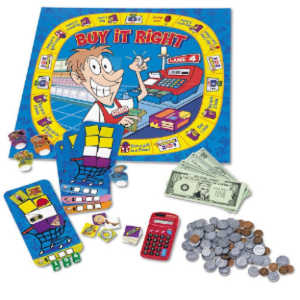
Buy It Right
Skill focus: Makes kids consider prices and expenses
Age range: Ages 5 through 12 (see below)
Buy It Right lets kids get hands-on experience dealing with bills and coins while also introducing the concept of prices and thinking through whether an object is too expensive or not. Kids set their prices and buy and sell items while moving their piece around the board. The game is best suited to 4th through 6th graders but can be adjusted for younger kids with fewer math skills or money recognition.
** As an Amazon Associate I earn from qualifying purchases. **
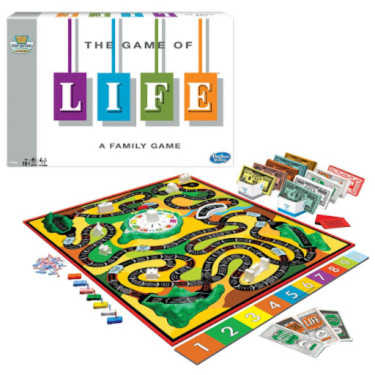
Game of Life
Skill focus: A simulation of what it’s like to manage money throughout life
Age range: Ages 8 and up
The Game of Life is a classic. And while some of the outcomes of the game are questionable – the winner is the one with the most money and not all of the events that occur are realistic – kids do receive an introduction to budgeting, as well as insurance, taxes and other financial considerations. As you play the game it might be worth pointing out some of the less plausible events which can open discussions about money management in general. Also, be sure to purchase the classic edition. The newer, updated edition doesn’t force players to consider as many financial decisions as the classic one does.
** As an Amazon Associate I earn from qualifying purchases. **
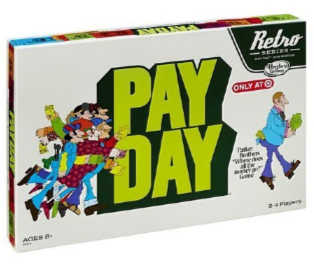
Pay Day
Skills focus: Introduces budgeting and saving a paycheck.
Age range: Ages 8 and up
This classic board game simulates what it’s like to get a paycheck each month while also having financial obligations. The game board resembles a calendar month and each space represents events like insurance offers or bills to pay. Players are also able to receive 10% interest on the balance of their savings when they land on Pay Day. The object of the game is to be the player with the most cash and savings at the end. Beware that the newer version of this game includes windfalls such as sweepstakes, lotteries, casino nights and jackpots which aren’t the best concepts to be introducing to children in a fun way that makes it easier for them to win. The classic version (featured above) is more focused on budgeting and basic financial concepts.
** As an Amazon Associate I earn from qualifying purchases. **
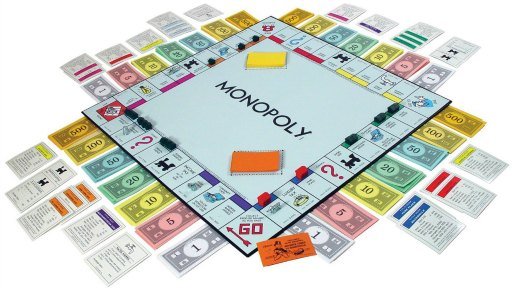
Monopoly
Skill focus: Handling dollar bills but also introduces basic business and economics concepts
Age range: 8 and up
The classic board game of Monopoly doesn’t teach budgeting skills in quite the same way as other games above. However, players are forced to strategically think through whether or not to purchase properties or hold on to cash. Also, unlike some of the other games listed above, Monopoly gets into more complex money concepts such as owning real estate, paying taxes, and dealing with large quantities of cash. Older kids will enjoy the challenge of classic Monopoly while Monopoly Junior is more suitable for younger kids.
** As an Amazon Associate I earn from qualifying purchases. **
To see the full list of Budgeting Games for Kids click here.
The Best Counting Money Games: Apps
Apps provide another opportunity for kids to learn how to count coins and bills. Plus, they’re interactive and kids can play with them independently.
While there are numerous apps that provide counting money games, the two listed below are really all you need. Not only do these apps teach kids how to count coins but they have the added benefit of being free.
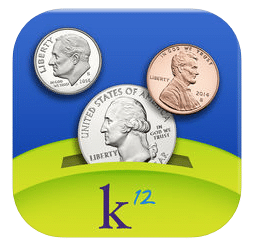
Counting Coins
Skill focus: Distinguishing and counting U.S. coins
Age range: Recommended for ages 4 and up
Counting Coins is a simple app that helps kids practice working with U.S. pennies, nickels, dimes, and quarters. There are four ways to play: 1) Match the value: try to make the same value as the coins shown on the screen using a different combination of coins, 2) Make the total: use the correct coins to make the total shown, 3) How many cents?: Type in the value of the coins shown, and 4) Show values: this feature tells kids the values of one or a combination of coins. This is the perfect app to introduce the concept of coins to kids. Be sure to also check out the follow-up app: Counting Bills and Coins.
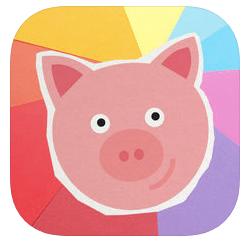
Peter Pig’s Money Counter
Skill focus: Distinguishing, counting, and adding U.S. coins
Age range: Recommended for ages 5 through 8
Peter Pig’s Money Counter allows kids to count and sort coins in three different games. Users can choose their skill level and whether or not they want to win rewards along the way. In the first game, kids place coins in the jar with the correct sign such as 25¢, 10¢, 5¢ and 1¢. In the second game, kids count a selection of coins and the press a circle with the correct amount. The third game has kids count from two groups of coins and then decide which amount is greater. These games are all fun ways to learn how to count although children might need help at first to figure out what they’re supposed to do in each game.
The Kids Money Management Toolkit has everything you need (except money!) to begin giving your kids an allowance. In addition to guidance and advice, you’ll also receive Save, Spend, and Share jar labels, a Kids Money Ledger, a Savings Challenge Sheet, a Jobs-for-Hire Sheet, and a Kids Allowance Contract. Click here to learn more.
See also:
16 Working Memory Games (That Are Fun for Kids!)
5 Fun & Educational Budgeting Games for Kids
19 Fun Counting Games & Activities for Kids
Kids Won’t Really Understand Money Until You Do This
How to Get Started on Kids Allowance – the Right Way
About the Author

Kerry Flatley is the owner and author of Self-Sufficient Kids. She has a BA in economics, an MBA, a certificate in financial planning, and has been investing ever since she landed her first job. Kerry also has two girls, ages 11 and 13, who have been receiving allowance – and learning money management – for the past five years.
